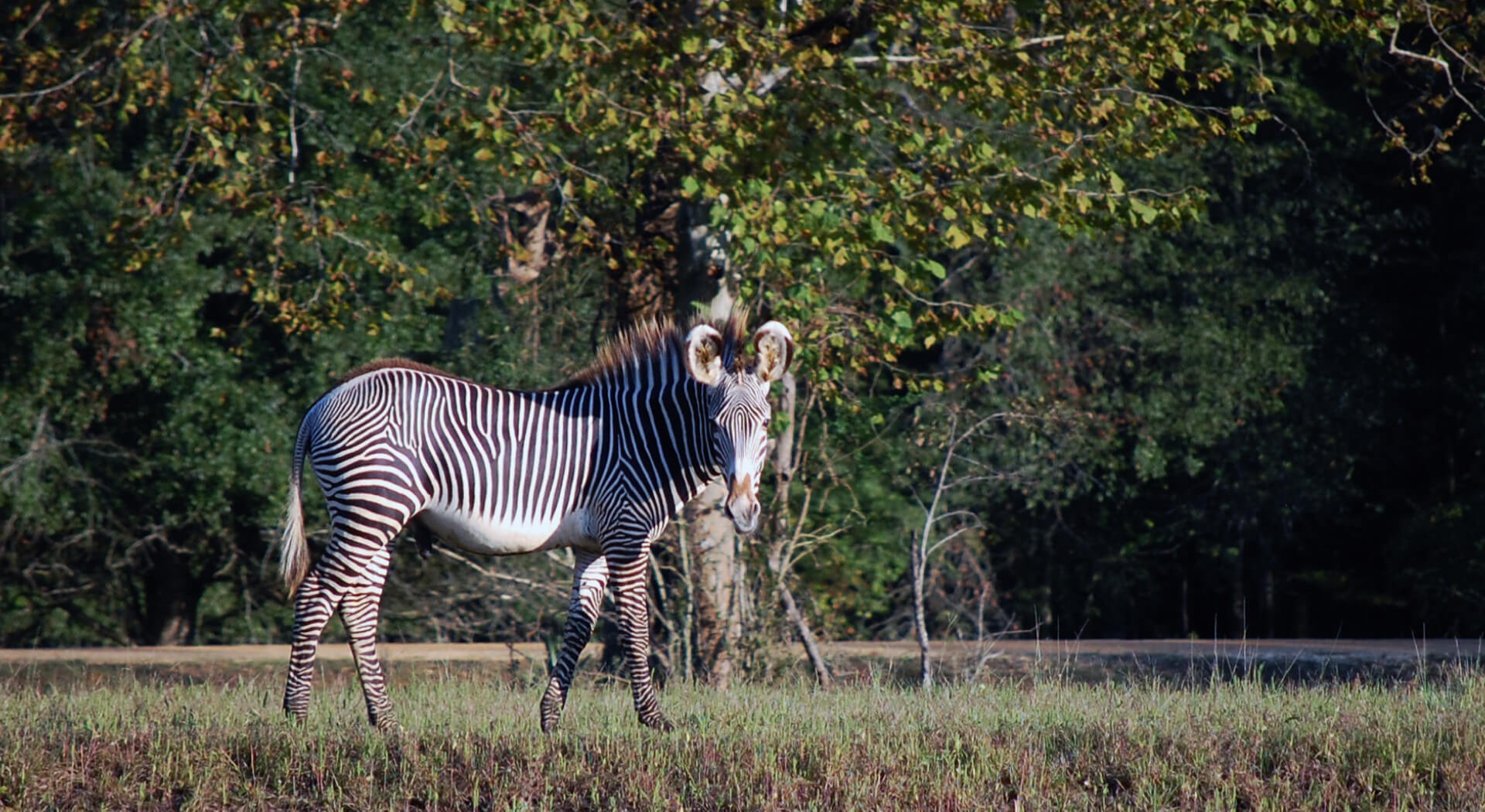Our Zebras
Alabama Safari Park is the only Zoofari Park that has both Grant’s zebras and Grevy’s zebras. Grant’s zebras are the most common and recognizable of the three zebra species. Grevy’s zebras, the largest of the species, weigh up to 990 pounds and have long limbs. In 2020, we welcomed baby Grevy’s zebra Yala, daughter of Yogi.
In the Wild
Zebras can be found primarily in eastern and southeastern Africa. Grant’s zebras live in groups known as families or harems, which are headed up by a single male, or stallion. Grevy’s zebra stallions are territorial, and mares, or females, enter the territory to mate and give birth. Zebras’ stripes are unique, like a human’s fingerprints, but collectively, their striped coats are believed to act as camouflage. Plains zebras, such as Grant’s zebra, reside in eastern and southern Africa’s treeless grasslands and woodlands. Ethiopia and northern Kenya’s arid grasslands are home to the Grevy's zebra.






